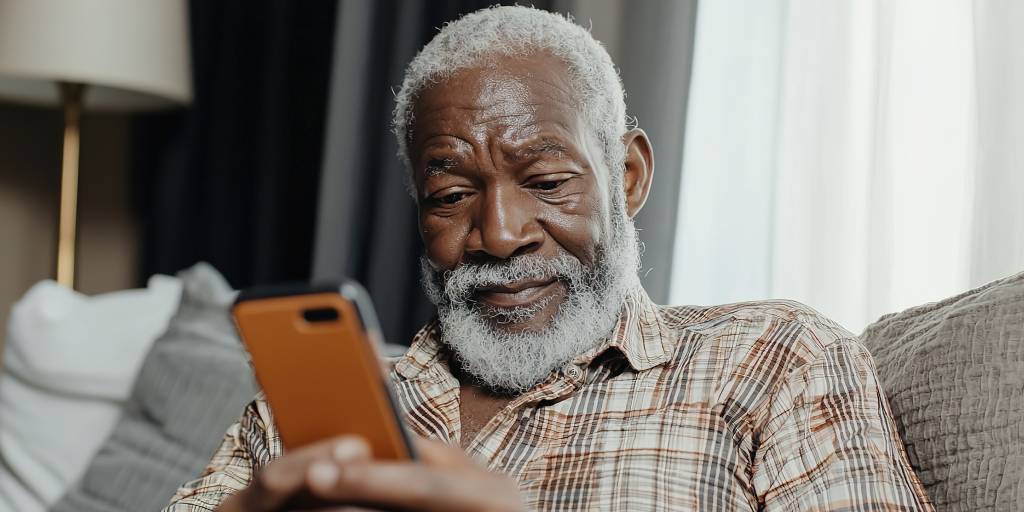Reigniting the Clinician-Patient Relationship in Modern Healthcare

Relationships are an important part of the human experience, and one of the professions where that is most predominant is in healthcare. It’s an industry focused on helping other people and the reason why many clinicians are drawn to it. But that clinician-patient relationship is being sacrificed in a broken system. It is now up to us to figure out how to reignite it in an evolving healthcare landscape.
We already know the importance of the relationship. Research from The Annals of Family Medicine show a correlation between improved clinician-patient relationship trajectories and improved functional health, stating that a strong relationship “involves good interpersonal communication, the development of a shared understanding that allows for reliance and trust, and ease of obtaining care, facilitated by the physician serving as a patient advocate.”
It is exactly this type of relationship that we, as clinicians, need to fortify as our core differentiator.
An Evolving Healthcare Landscape
The way we practice medicine now is not the same as it was 20 years ago, and it will continue to evolve. The key is to find the opportunities that change brings while removing the obstacles that surround it.
The EHR may feel like ‘death by a thousand clicks,’ but it also provides the convenience of being able to pull up patient information electronically from anywhere as opposed to physically going into the office to read through paper charts. Changes in delivery models, such as value-based care, require a whole new set of patient care models that we need to incorporate into our practice, but it also goes back to the roots of whole-person care and the quality and time we want to spend with our patients.
Then there is a whole new genre of competitors entering the landscape that are meeting patients’ needs at a different level than what we had previously seen. Tech giants, like Amazon, retail businesses, and even virtual and technology-led platforms, like Teladoc Health, are providing quick and convenient access for patients, but to a limited number of services. Patients can get their flu shots while shopping for groceries or receive a prescription from the comfort of their home through a telemedicine visit.
There is value in this type of care, but these competitors do not take full responsibility for our patients’ care and well-being through their entire healthcare journey. They do not follow them through chronic condition management to surgical care, shared decision-making, and crucial conversations, such as advance care planning. These essential integrated healthcare services are the heart of what we do as clinicians.
Removing Distractions to Focus on Relationships
Clinician burnout continues to soar with overwhelming administrative tasks and time constraints. We have lost our work-life balance stuck behind a screen both during patient visits and after-hours. To go back to our core work, reignite the clinician-patient relationship, and find joy in practicing medicine again, we must remove the barriers.
6 Strategies to Reignite the Clinician-Patient Relationship
Creating strong relationships in healthcare benefits the clinician, patient, and the organization. Happier, more engaged patients lead to better health outcomes, increased clinician satisfaction, and improved financial outcomes.
1. Go Back to Core Work
Improve physician wellness by giving them time to actually spend with patients and find joy in their work rather than hours of non-value added administrative tasks.
2. Provide Personalized Care
Design clinical interactions around crucial conversations, rather than the documentation burden involved in the process, for more meaningful patient engagement.
3. Remove Administrative Chores
Delegate, and remove where possible using technology, administrative and documentation burdens that have been placed upon the clinician over the years so that everyone on the team functions at the top of their license.
4. Integrate Technology
Implement thoughtfully designed technologies that will remove administrative burdens, streamline workflows, and provide data-driven insights for improved patient outcomes.
5. Build a Seamless Patient Journey
Use a patient-centric approach to provide continuity of care, design for aspects of the patient experience outside of the clinical interaction, and remove barriers throughout each stage of the patient journey (pre-visit, post-visit, peri-visit, between visits, and acute settings).
6. Rethink Operational Infrastructures
Redesign enterprise processes to be more efficient with the right technology and resources for improved patient care.
It’s easy to say but more difficult to do. The good news is, we can see the way there. We just need some help along the way.
Although technology, such as EHRs, has inadvertently added some of those burdens onto clinicians, it also has the capability to remove them if built upon human-centered design principles focused on efficient clinician workflows. The right tools should provide the right resources, support, and data at the right time to truly impact patient care. When we can focus on the patient rather than the screen, that relationship can be reignited.
Building the Future of Healthcare Technology for the Next Generation of Clinicians
So much is broken in the current healthcare system that we can’t leave it like this for the next generation of healthcare practitioners or there might not be any. What can we implement now so that they can have as much joy in practicing medicine as previous generations? It won’t be perfect, but it will make a difference.
That means rethinking the entire operational infrastructure ̶ administrative, clinical, and financial workflows throughout the entire patient journey. Everything needs to be centralized, automated as much as possible, and tasks delegated to the right people so that everyone is operating at the top of their licenses and technology handles everything else with human oversight. This way we can truly focus on the patient in front of us.
There are opportunities with developing healthcare technologies to redesign the patient and clinician experience right this time. We need to implement them based upon human-centered design principles to make the most of their capabilities. Having the right partner in this endeavor is what will make it possible.
Until now, most healthcare organizations have been working with disjointed point solutions from multiple vendors, which has led to additional communication and integration issues and more work on our office and clinical teams. Care enablement platforms use pragmatic technology to create a centralized system, pulling in data from disparate systems. In collaboration with health systems, the platforms remove administrative burdens and streamline workflows, allowing staff to focus on their core work throughout each step of the patient journey.
Part of reigniting that clinician-patient relationship is empowering our patients to be more involved in their own healthcare. They’re more likely to trust their clinician and feel supported when we can spend that time face-to-face, share personalized data-driven insights about their care, and create a plan of action together. Care enablement platforms make that possible.
We have an opportunity to get healthcare technology right this time. Together, we can do this and change the course of healthcare for the better for clinicians, patients, and practices.
For more on the importance of relationships as healthcare differentiators, watch an AMGA webinar co-presented by IKS Health Chief Medical Officer Dr. Grace Terrell and Dr. Rick Bone, Senior Medical Director of Population Health for Advocate Medical Group: “Clinician-Patient Relationship Superiority: Fortify Your Core Differentiator.”
Learn more about how technology can support a patient-centered approach from the initial visit through ongoing management and follow-up care with the IKS Health Care Enablement Platform.

Dr. Grace Terrell
Dr. Terrell leads the clinical leadership team for IKS Health that provides clinical input and guidance for product evolution with the aim of improving care delivery and patient safety.
Dr. Terrell is a national thought leader in the US for healthcare innovation and delivery system reform; also a serial entrepreneur in population health outcomes driven through patient care model design, clinical and information integration, and value-based payment models. She is also a practicing general internist.


